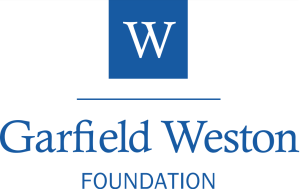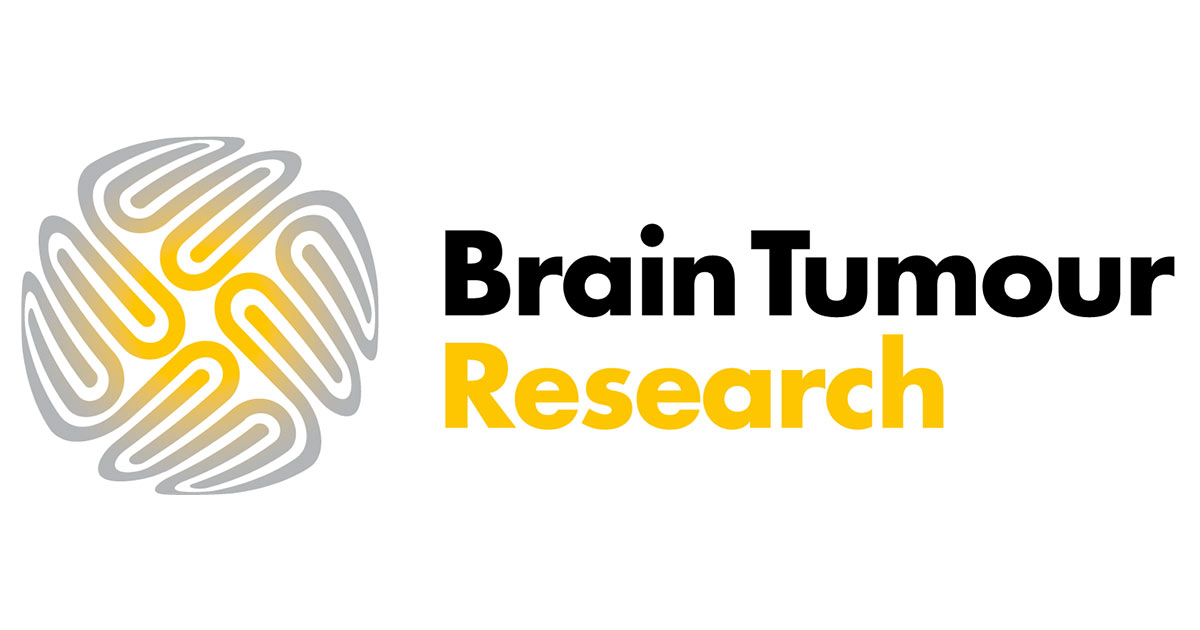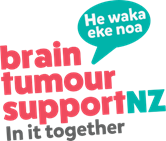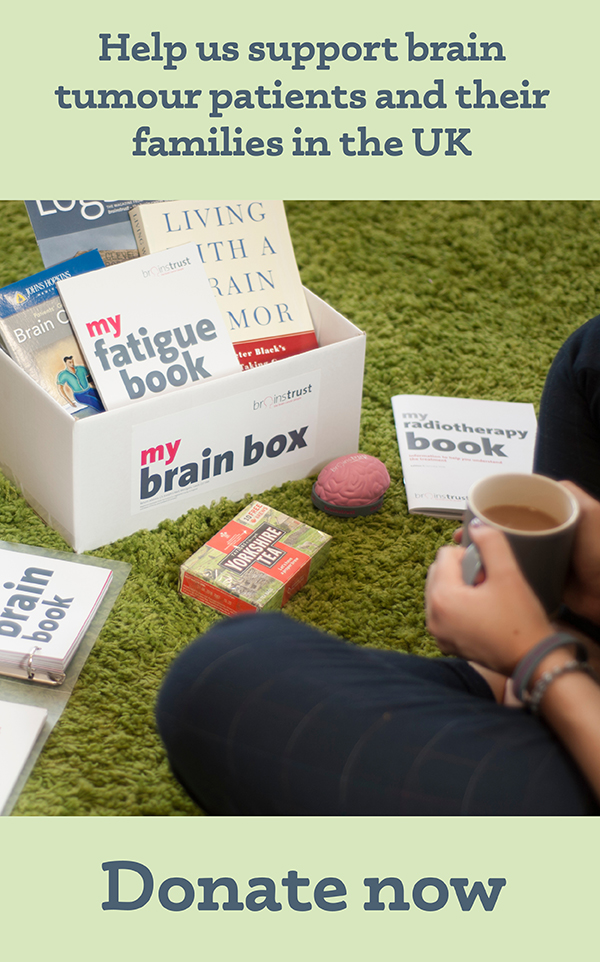Our collaborations and partnerships
Our ethos is that ‘none of us is as smart as all of us’. Meaningful collaboration and co-creation is a key component of our approach as we work to secure the best outcomes for anyone who is living with a brain tumour. This page is dedicated to highlighting and celebrating the collaborative work we are engaging with. It’s thanks to these effective partnerships that we are able to make such a difference. Find out more about the impact our work is having here.
- Our funding partners
- Collaborations across the charity sector
- Organisational partnerships and collaborations
- Patient-focused partnerships
- Collaborations with the clinical community
- Influential and high profile ambassadors
If you’d like to support our work please get in touch with us on hello@brainstrust.org.uk or 01983 292 405.
Our funding partners
Garfield Weston Foundation
We are proud to be a charity partner with Garfield Weston Foundation. The foundation is generously supporting our core costs with a grant of £30,000 this year.
A family-founded grant-maker, in the most recent financial year Garfield Weston Foundation gave away nearly £90 million to over 1,980 charities across the UK.

The Rank Foundation
We are proud to be a charity partner with The Rank Foundation and to be a member of the RankNet community. The foundation has generously supported brainstrust over many years, helping us to develop leadership and innovative approaches. Most recently, a Golden Award grant of £20,000 has helped us to expand our proven coaching services and develop new tools to help people with brain tumours to become co-pilots in their care.
The Rank Foundation is a philanthropic organisation and the charitable legacy of Joseph Arthur Rank (1888-1972).
Find out more about PRIME | Find out more about Thrive | Find out more about The Rank Foundation
Edward Gosling Foundation

We are proud to be a Charity Partner with The Edward Gosling Foundation. The foundation helped us to navigate the Covid-19 pandemic and is now generously supporting our essential frontline services with a grant of £25,000 this year.
Click here to find out more about the Edward Gosling Foundation.
The National Lottery Community Fund

The National Lottery Community Fund, the largest funder of community activity in the UK, has granted us £9,995 through Awards for All England to deliver ‘health and wellbeing events for the North of England brain tumour community‘. These events will connect our community and offer a supportive space for people affected by a brain tumour to increase their well-being and learn effective coping strategies. They have also granted us £10,000 towards the core cost of our brainstrust service in Scotland, this grant will support the service for 12 months, ensuring we can be there for everyone in Scotland who needs us.
Naseem’s Manx Brain Tumour Charity
Our PRIME service is supported by Naseem’s Manx Brain Tumour Charity who have granted brainstrust £10,000 to help grow and scale PRIME’s integral patient involvement work. This funding will help PRIME continue to support the design of brain tumour clinical trials.
Naseem’s Manx Brain Tumour Charity supports Isle of Man residents who are suffering with a brain tumour by way of giving them financial support and providing the latest information about brain tumours.
Find out more about PRIME | Find out more about Naseem’s Manx Brain Tumour Charity
Moondance Foundation
We are delighted to have funding from the Moondance Foundation to support our dedicated service in Wales. The Moondance Foundation is a family charitable foundation set up in 2010 by Diane Briere de l’Isle and Henry Engelhardt to further their family’s philanthropy and giving with a focus on activities in Wales.
Collaborations across the charity sector
Brain tumour research

Brain Tumour Research are collaborating with brainstrust to accelerate the work of brainstrust‘s Patient Research Involvement Movement (PRIME). PRIME puts people affected by a brain tumour diagnosis at the heart of clinical research studies. This growing programme strengthens the quality of research applications and has helped researchers to attract over £17m funding to date.
“Our vision is to find a cure for all types of brain tumours and brain tumour patients are at the heart of everything we do, to this end we are very keen to enable meaningful conversations between researchers and patients We are extremely pleased to be investing in this important collaboration which will help the brain tumour community to feel more involved in shaping the future of research.” – Dr Karen Nobel, Director of Research, Policy and Innovation
Find out more about PRIME and our partnership with Brain Tumour Research.
Tessa Jowell Brain Cancer Mission
We have enjoyed our continued support of the Tessa Jowell Brain Cancer Mission (TJBCM). brainstrust provides financial support to the mission’s work, and our chief executive, Will Jones, shares our experiences, insights and the voices of our communities through his role on the Join Strategy Board of TJBCM.
Macmillan Horizon Centre
Our collaborative work with Macmillan Horizon Centre, based in Brighton, plays an important role in our regional support for London and the South East. Working with Macmillan Horizon Centre on the delivery of workshops, events and support groups for people affected by brain tumours has allowed us to provide the best support possible to local community.

Further collaborations
We are actively involved in Cancer52 network of charities; we represent children and young people with brain cancer through our role on the steering group of the Children and Young People with Cancer Coalition; and we work closely with Cancer Research UK on matters relating to brain cancer and clinical research.
Organisational partnerships and collaborations
We work with a broad range of companies outside the health and charity sector. These relationships enhance our capabilities, capacity and expertise, and they all contribute meaningfully to our mission and our impact. We would like to express our specific appreciation to:
- Anaplan
- Baker McKenzie
- Charisma Charity Recruitment
- Class Networks
- Eric Callister
- Google UK
- Harrison Black
- Irene Clark
- J Pullan & Sons
- Louise Baker
- McQueenie Mulholland
- Nifty Communications
- Salesforce
- Smarter Not Harder (SNH)
- TechSoup
- Think Creative Consultants Ltd
- Thrive
- Tim Colman
- Vicki Munro
Patient-focused partnerships
Jersey Brain Tumour Charity
Together with the Jersey Brain Tumour Charity, we are providing Brain Boxes and resources to people diagnosed with a Brain Tumour on the Island of Jersey. These people face unique challenges with isolation and complex care pathways where travel is required to the mainland UK.
Click here to find out more about Jersey Brain Tumour Charity.
Brain Tumour Support New Zealand

Recognising the need to reduce duplication of effort at a global level, we support the charity Brain Tumour Support New Zealand with the production of reliable, trustworthy and accessible brain tumour patient information so that people with a brain tumour in New Zealand can feel more in control on their journey.
Click here to find out more about Brain Tumour Support New Zealand.
Neurological Alliance of Scotland
brainstrust is an active member of the the Neurological Alliance of Scotland, and Carol Cochrane, brainstrust’s Support Specialist for Scotland, acts as a trustee and member of the executive who oversees governance of the Alliance.
The Neurological Alliance of Scotland is an umbrella body of organisations that represent people with a neurological condition and those who support them. By working together we can ensure that the issues facing people living with neurological conditions are understood, and that services are improved.
Collaborations with the clinical community



We work with associations that include BNOS, EANO and the SBNS so that patient voice informs the clinical agenda, and so that clinical expertise is easier to access and understand for the brain tumour patient community.
Find out more about BNOS | Find out more about SBNS | Find out more about EANO
Influential and high profile ambassadors
World Record holder Jack Jarvis
In December 2021 British soldier Jack Jarvis embarked on a world record breaking row to raise money for brainstrust. The challenge – dubbed ‘United We Conquer’ – was taken on in memory of his late grandfather, who he sadly lost to a brain tumour in 2007. Jack raised over £70,000 for brainstrust and helped spread vital awareness of our services.
Jack continues to support brainstrust work, getting involved in raising awareness across his platforms and supporting brainstrust campaigns such as Wear Grey.

Sammy Taylor
Sammy discovered brainstrust after being diagnosed with a brain tumour, and the experience led her to become a long term supporter of our work.
It got so much that I didn’t know who else to turn to and I reached out brainstrust one night because I just needed someone to offload to. It restored my faith in humankind completely. Jane from brainstrust contacted me to say she’d been thinking about my case more and to help me make this decision a little easier they will pay for me to have a consultation with Andrew McAvoy – a world leading neurosurgeon, also voted best brain surgeon in the UK.
It has changed the way I view fundraising and charities forever, seeing first-hand what a huge difference it can make.
Sammy’s business Beauty in the Brain donates 10% of all profits to brainstrust and Sammy continues to use her platform to help raise awareness of brain tumours and brainstrust services.
Read more about Sammy’ s own experience of living with a brain tumour here. | Visit Beauty in the Brain.

Gabby Allen
Reality TV star and fitness instructor Gabby Allen knows first-hand the benefit of brainstrust support, as her father, Mike, was diagnosed with a GBM in 2012. He reached out to brainstrust to get support for his family:
“brainstrust were so helpful with my dad – they knew it wasn’t just about him and his illness, but how it affected everyone around him as well. That’s what my dad loved about the charity, it was a whole family matter, and it was about the person, not the patient. So he trusted them enough to know that we weren’t on our own.”
Ravi Adelekan
At age 7 Ravi Adelekan was diagnosed with a non-malignant tumour on his brain stem, Ravi underwent surgery that partially removed the tumour and he continues to live with the side effects today. brainstrust supported Ravi and his family throughout his aftercare. To mark the anniversary of his surgery Ravi recorded a charity single to help all children with a brain tumour get the help they need. Ravi donated half of all funds raised to brainstrust and helped raise a huge amount of awareness around childhood brain tumours.

Work with us
Partnerships and collaborations are vital to our mission to build a better world for people affected by a brain tumour. If you’d like to work with us, please get in touch. Email: hello@brainstrust.org.uk Call: 01983 292 405
Our impact
Our work is driving an 18% increase in the wellbeing of people we support.
Find out more about how we’re securing better outcomes for people living with a brain tumour.
Stay up to date with the latest news
Opt-in to our mailing list to receive all the latest brain tumour news straight to your inbox.

















